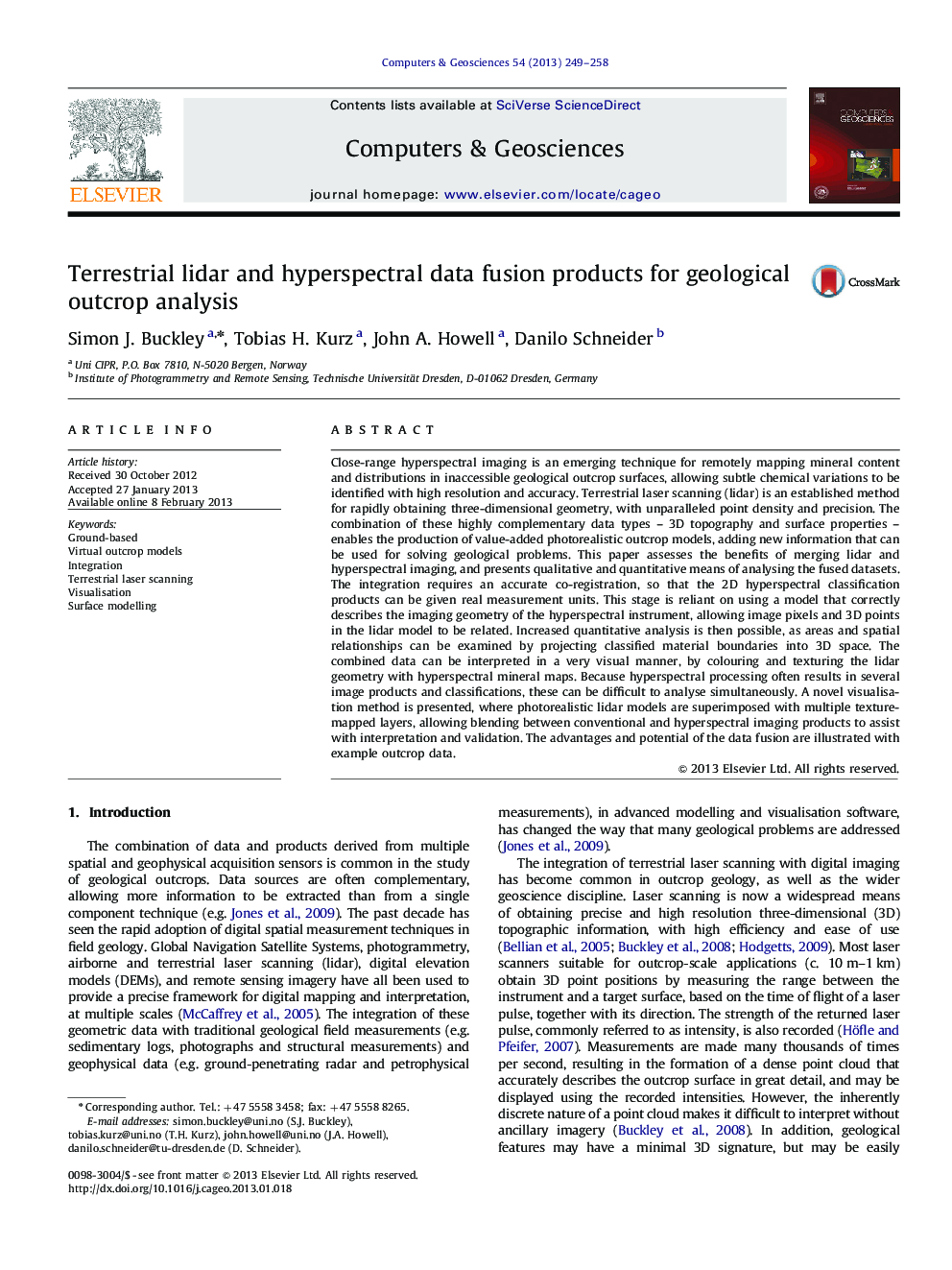| کد مقاله | کد نشریه | سال انتشار | مقاله انگلیسی | نسخه تمام متن |
|---|---|---|---|---|
| 507026 | 865087 | 2013 | 10 صفحه PDF | دانلود رایگان |

Close-range hyperspectral imaging is an emerging technique for remotely mapping mineral content and distributions in inaccessible geological outcrop surfaces, allowing subtle chemical variations to be identified with high resolution and accuracy. Terrestrial laser scanning (lidar) is an established method for rapidly obtaining three-dimensional geometry, with unparalleled point density and precision. The combination of these highly complementary data types – 3D topography and surface properties – enables the production of value-added photorealistic outcrop models, adding new information that can be used for solving geological problems. This paper assesses the benefits of merging lidar and hyperspectral imaging, and presents qualitative and quantitative means of analysing the fused datasets. The integration requires an accurate co-registration, so that the 2D hyperspectral classification products can be given real measurement units. This stage is reliant on using a model that correctly describes the imaging geometry of the hyperspectral instrument, allowing image pixels and 3D points in the lidar model to be related. Increased quantitative analysis is then possible, as areas and spatial relationships can be examined by projecting classified material boundaries into 3D space. The combined data can be interpreted in a very visual manner, by colouring and texturing the lidar geometry with hyperspectral mineral maps. Because hyperspectral processing often results in several image products and classifications, these can be difficult to analyse simultaneously. A novel visualisation method is presented, where photorealistic lidar models are superimposed with multiple texture-mapped layers, allowing blending between conventional and hyperspectral imaging products to assist with interpretation and validation. The advantages and potential of the data fusion are illustrated with example outcrop data.
► Lidar and hyperspectral fusion gives geoscientists new ways to map outcrop content.
► Multitextured 3D photorealistic models aid communication and validation of results.
► Classification vectors are mapped to 3D space to aid quantitative analysis.
► Accuracy of registration and classification can be assessed using the data fusion.
Journal: Computers & Geosciences - Volume 54, April 2013, Pages 249–258